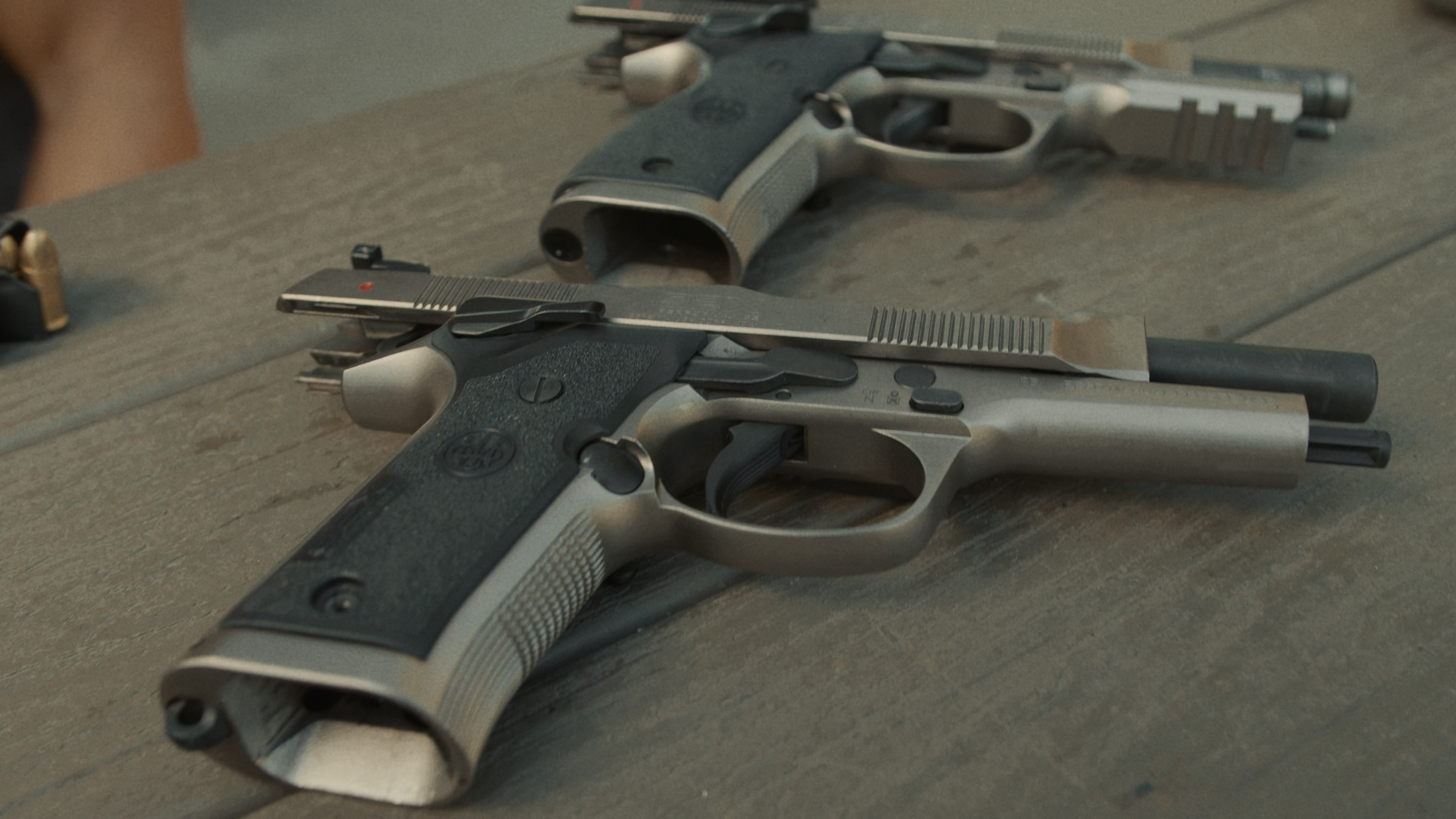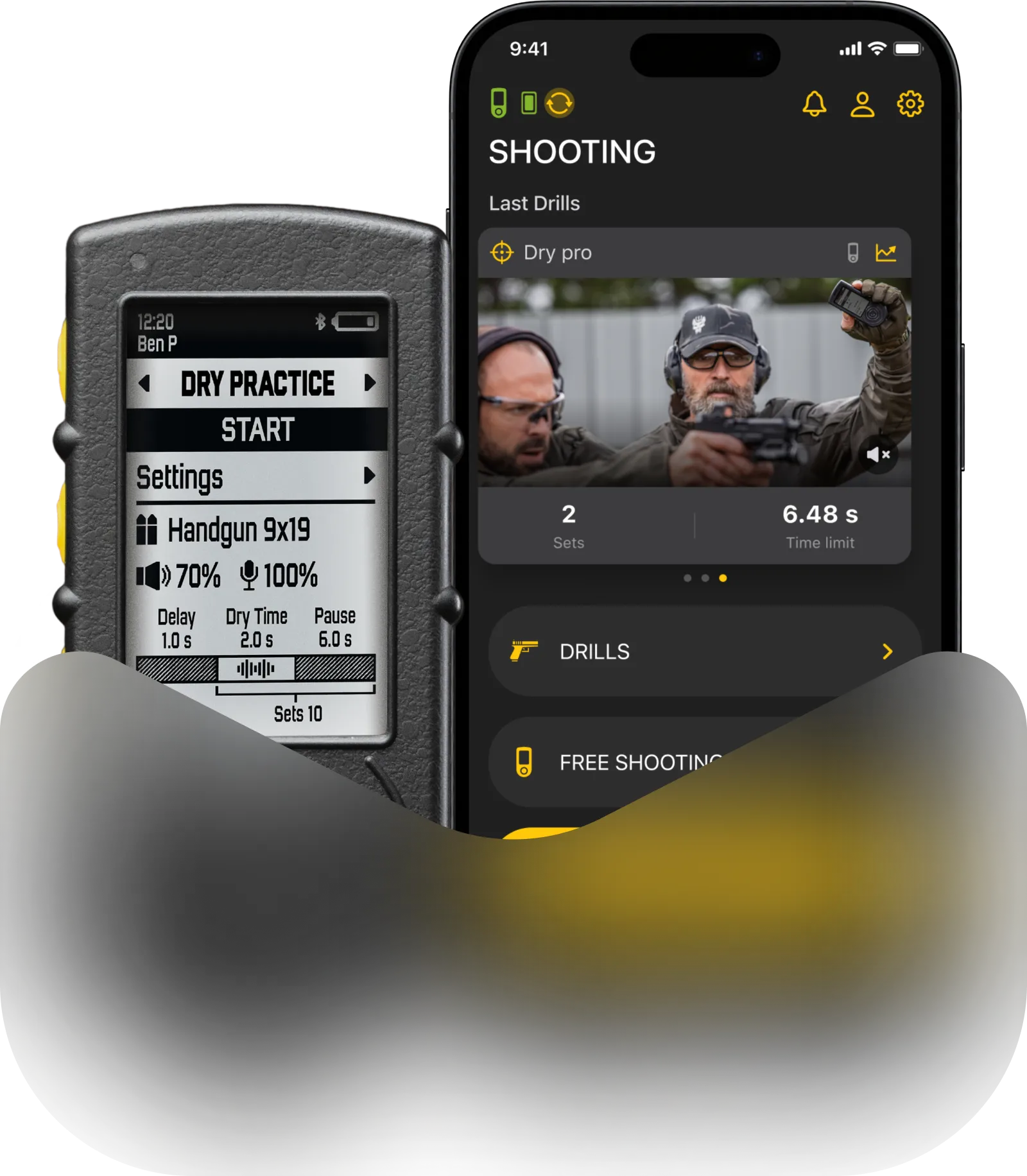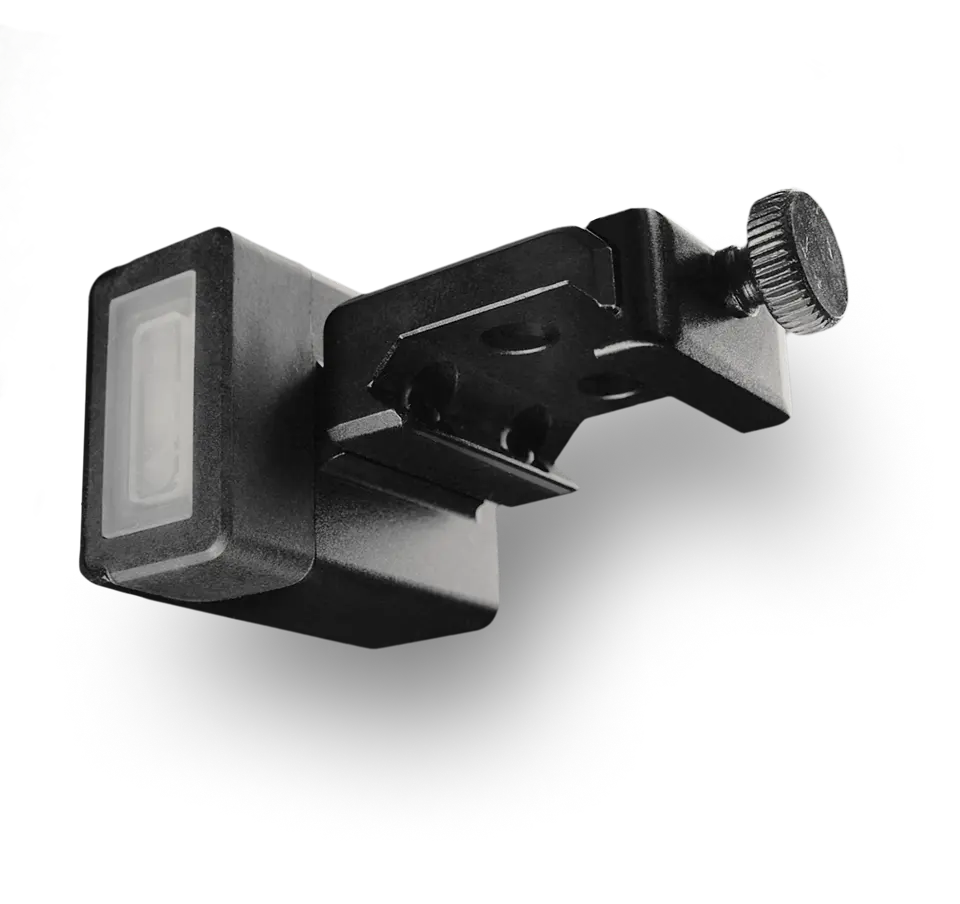EDC vs Competition Guns: When it comes to handguns, there’s a stark difference between firearms designed for competitive shooting and those tailored for everyday carry (EDC) or self-defense. Renowned competitive shooter and champion JJ Racaza takes us through the key distinctions between these categories, offering expert insights into their functionality, design, and performance. Here, we’ll dive into his explanations and draw out the vital points for enthusiasts and professionals alike.
Competition Guns: Built for Performance
“What we have here are guns designed specifically for competition,” JJ explains, starting with the race guns. These firearms are engineered for precision, speed, and overall performance, catering to disciplines like USPSA (United States Practical Shooting Association) and IPSC (International Practical Shooting Confederation).
Key Features of Race Guns
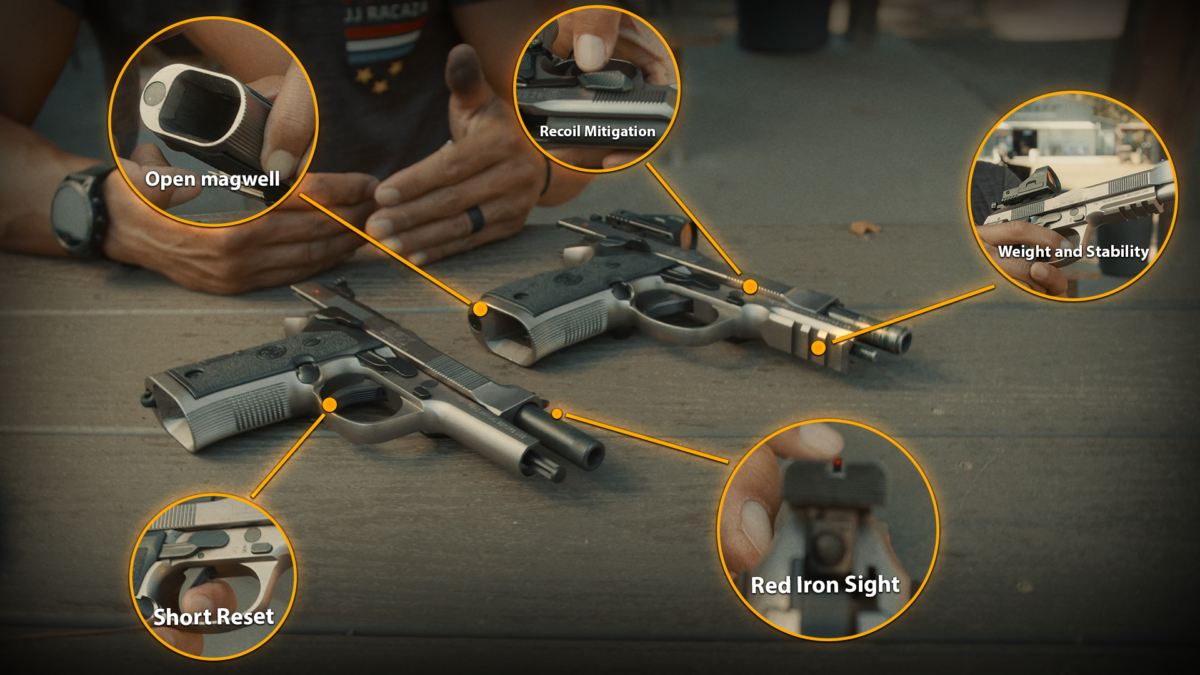
• Weight and Stability: „This one has a lot more weight compared to others,” JJ notes, emphasizing how the additional weight minimizes felt recoil and keeps the gun flatter during rapid fire.
• Magwell Design: „Both of these guns have an open Magwell for easier reloads”
• Trigger Mechanism: „The trigger on these has a very short reset and a crisp break. Everything is designed for performance,” Racaza adds.
•Recoil Mitigation: „Extended takedown levers can be used as additional leverage points to reduce muzzle rise,” JJ shares, pointing out features that enhance shooting efficiency.
•Red Front Sight: The bright red fiber optic front sight allowing shooters to acquire their target faster and aim with greater precision.
JJ Racaza on Competitive Guns for Everyday Carry:
„Race guns are not ideal for everyday carry for several reasons. They’re very heavy and uncomfortable for extended periods. The sharp edges can dig into your body, and their bulk makes them impractical for concealed carry.”
EDC Guns: Practical and Concealable
Moving to EDC guns, JJ introduces models built for self-defense and concealment. These firearms prioritize comfort, reliability, and ease of carry over pure performance. Key Features of EDC Guns:

Everyday carry (EDC) guns are designed with practicality and safety in mind, offering several features that distinguish them from competition firearms. First, their compact and lightweight design makes them highly portable. As JJ Racaza explains, „These are much smaller and narrower compared to race guns,” often built with aluminum or polymer frames to reduce weight. Second, they feature a simplified magwell, which balances usability and portability. According to Racaza, „The bevel magwell is no longer quite there, but it’s enough for basic reloads.” Third, enhanced safety mechanisms, such as decocking systems, ensure safer handling in high-stress situations. „Features like decocking mechanisms allow for safer handling,” he notes. Fourth, their ergonomic design prioritizes concealment, with narrower and more streamlined grips. As JJ points out, „The grip is much more narrow and streamlined, making these guns easier to conceal.”
Lastly, EDC guns typically come with fixed iron sights, which are optimized for defensive scenarios rather than competitive precision. These sights are bright and simple, often featuring night sight capabilities, providing quick target acquisition in low-light conditions without the need for adjustments.
The Polymer Advantage
Highlighting the Beretta APX A1, JJ explains, „This gun has a polymer frame grip, making it lighter and more ergonomic. Everything is streamlined for better concealment.”
However, these guns have limitations:
• Reloading Difficulty: „Without a beveled Magwell, reloading is tougher,” he adds.
• Trigger Performance: „The reset is longer and the break is heavier compared to competition guns,” JJ remarks.
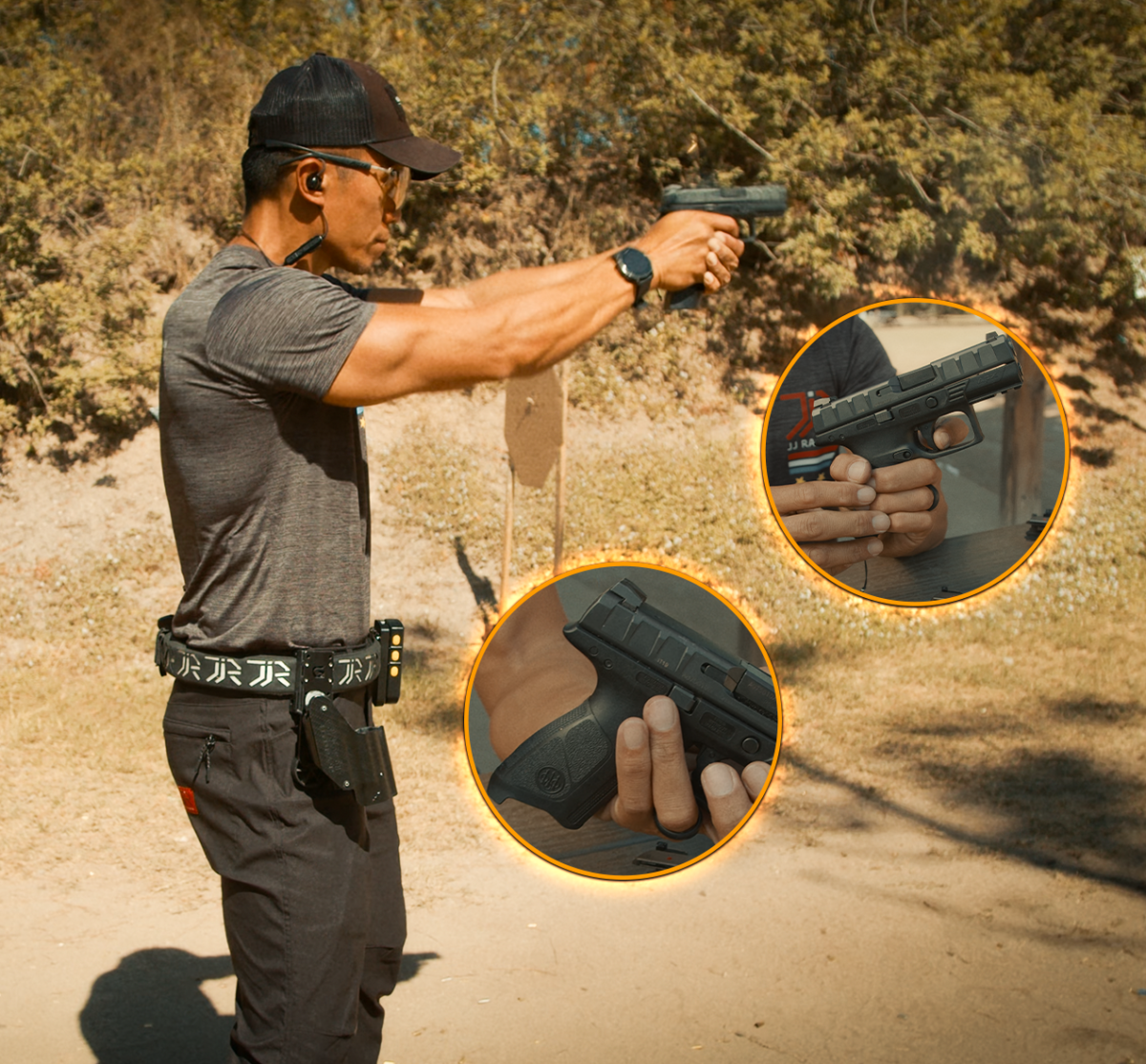
Head-to-Head Comparison: EDC vs Competition Guns

To illustrate the differences, JJ used the SG Timer to measure performance with three guns:
• Race Gun: Best time – 0.79 seconds⏱️. “It had the tightest spread and performed exceptionally well,” JJ concludes.
• Compact Performance Gun: Best time – 0.94 seconds⏱️. “It’s a miniaturized performance gun that still holds its own.”
•Polymer Defensive Gun: Best time – 1.04 seconds⏱️. “It had the widest spread and lower hit factors,” JJ notes.
Why the Difference?
„With competition guns, you can adjust the sights and zero them to your shooting style. Defensive guns, however, have fixed sights, requiring shooters to “know your hold” and practice extensively to understand where they’ll hit.
– JJ Racaza
JJ’s Advice for Buying EDC and Competition Firearms
“If you decide to buy a gun, pick one you can perform with,” JJ advises. While defensive guns are designed for safety and portability, they’re not built for competitive performance. On the other hand, race guns excel in competitions but fall short in practicality for everyday use.
Final Thoughts
JJ’s breakdown makes one thing clear: the choice between a race gun and an EDC gun depends entirely on your needs. For competition, prioritize performance-focused features. For everyday carry, opt for a lightweight, compact firearm with reliable safety mechanisms. As JJ aptly puts it, “Go to the range, check your zero, and understand your gun before you use it.”
With insights like these, there’s no doubt that JJ Racaza’s expertise continues to guide both novice and seasoned shooters in making informed decisions about their firearms.
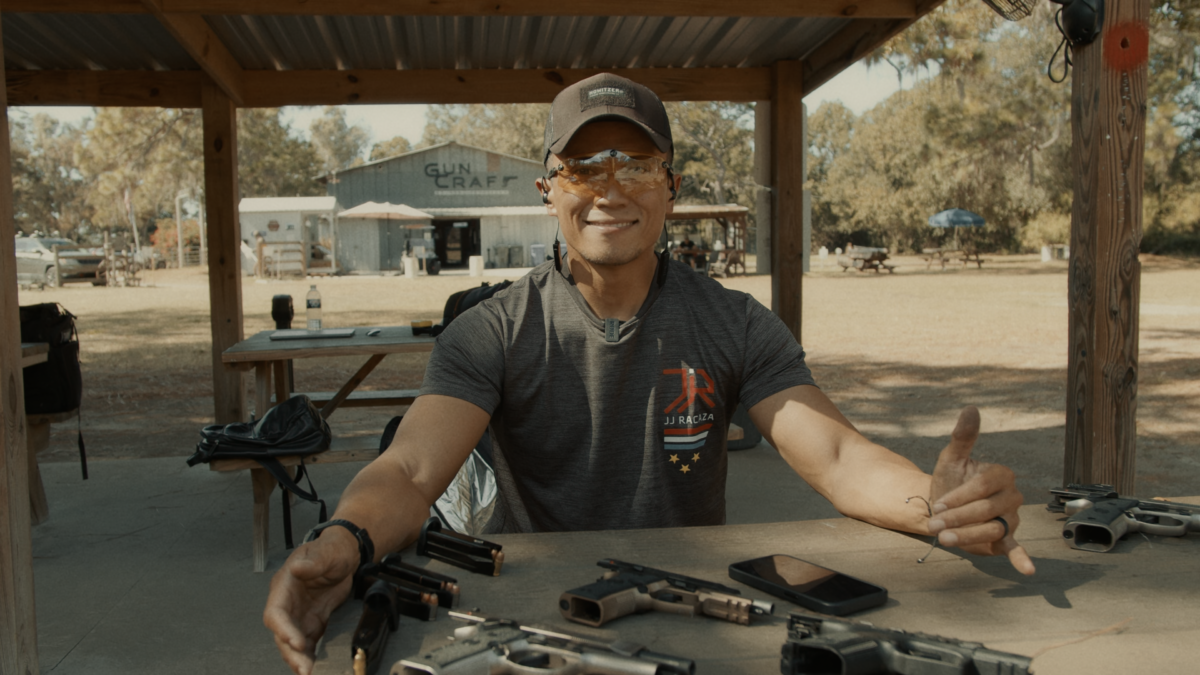
Watch full video on youtube here 👉EDC vs Competition Guns
Tags: Drills app, electronic shooting level, Lena Miculek, long range shooting, prs, sg pulse, SG Timer 2, Shooters global, shooting level, smart shooting level

